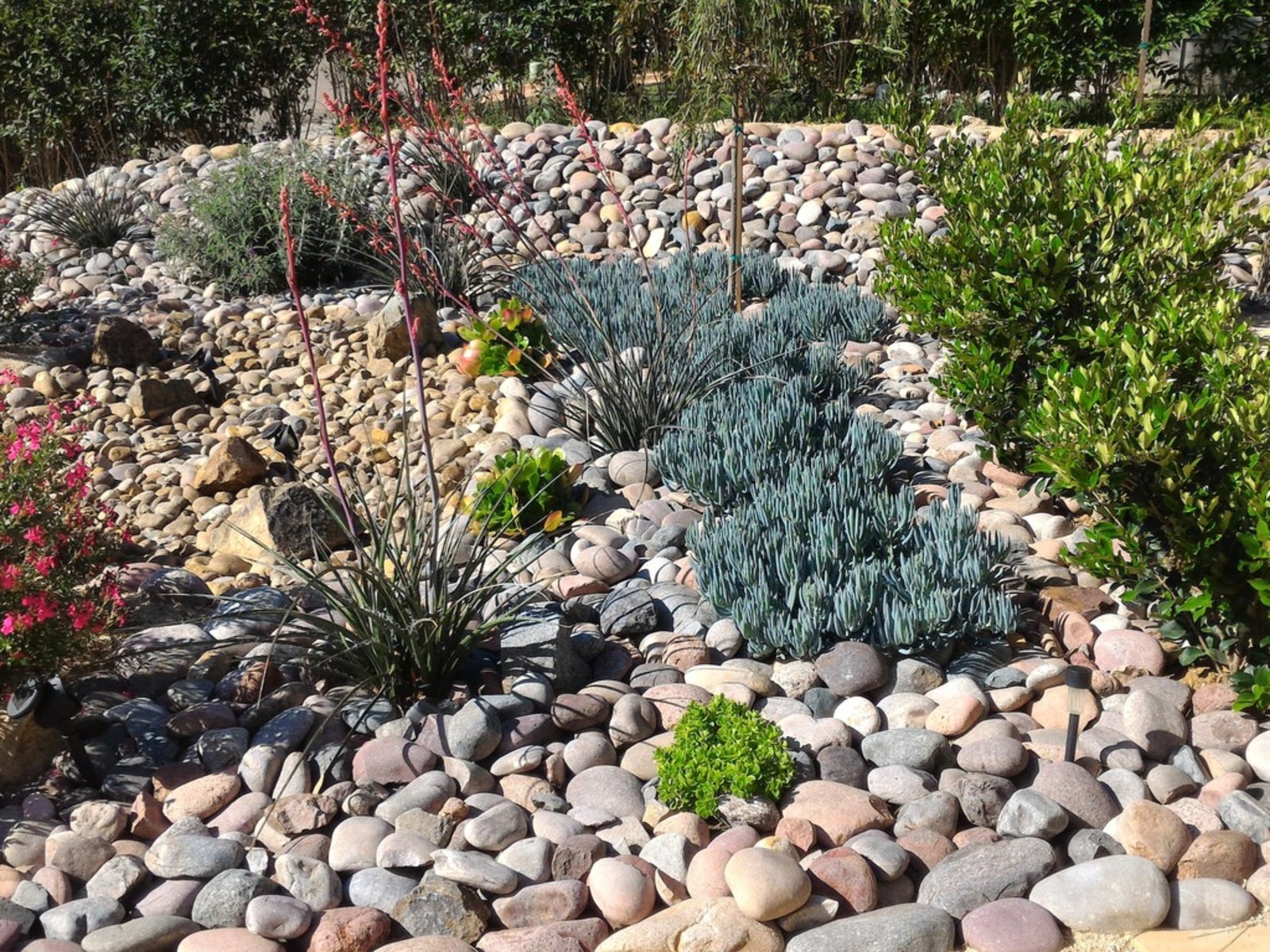What Is Xeriscaping: A Beginner's Lesson In Xeriscaped Landscapes


Every year millions of gardening magazines and catalogs travel through the mail to locations all over the world. The covers of almost all of them feature a lush and beautiful garden. Gardens that are brightly green and very water intensive. This type of garden is fine for a great many gardeners unless you happen to live in a climate that sees very little in the way of rainfall. In dry climates, you would need to water such gardens deeply and almost everyday. However, xeriscaped landscapes can remedy this. Keep reading to learn more.
Reducing Water Needs with Xeriscape Gardening
Watering can become an even bigger issue when faced with the fact that many areas in dry climates already have some serious water rights and conservation issues. So what is a good gardener to do? All these magazines and catalogs make you believe that your garden should look a certain way, filled with green and exotic plants that need to be tended and coddled. If you follow that stereotype though, you are helping to support some pretty serious environmental problems. These days, there has been a revolution in the gardening world. Gardeners in areas that are not within "traditional" climates have put their feet down and said, No More! Many of these gardeners are chucking the traditional magazine image of a garden for ones filled with native and local climate-friendly plants. In drier, water limited climates, this style of gardening is xeriscaping.
What is Xeriscaping?
Xeriscaping is the art of taking plants that need little water and using them in your landscape. The plants frequently used are succulents, cacti, and grasses incorporated with a fair amount of hardscaping that best accents the plantings. Xeriscape gardening does take a little bit for the eye to get use to, especially if the eye is use to looking at lush green landscapes frequently seen in magazines and on TV. However, if one took a few moments to study xeriscaped landscapes, then he/she would come to appreciate the diversity and beauty that exists there. Plus, the xeriscaped gardener can enjoy the satisfaction of knowing that the landscape is much more suited to the natural environment. Xeriscaping has benefits beyond just being environmentally friendly. There is both a cost and energy savings benefit. A xeriscape gardener will spend less on replacing plants that die because they are not suited to the local climate and spend less energy pampering and watering non-native plants. This creates a much more enjoyable, low-maintenance garden. So, if you live in a high heat, low-water climate, you should seriously consider moving your garden towards the xeriscaping ideology. With xeriscaped landscapes, you will enjoy your garden more, and your water bills won't look near as frightening.
Gardening tips, videos, info and more delivered right to your inbox!
Sign up for the Gardening Know How newsletter today and receive a free copy of our e-book "How to Grow Delicious Tomatoes".

Heather Rhoades founded Gardening Know How in 2007. She holds degrees from Cleveland State University and Northern Kentucky University. She is an avid gardener with a passion for community, and is a recipient of the Master Gardeners of Ohio Lifetime Achievement Award.
-
 Get Ready For A Summer Of Hummers! Grow These Full Sun Hummingbird Plants and Flowers
Get Ready For A Summer Of Hummers! Grow These Full Sun Hummingbird Plants and FlowersIf you’re lucky enough to enjoy a sunny backyard, make sure you are maxing out on your pollinator opportunities and grow these full sun hummingbird plants and flowers
By Tonya Barnett
-
 12 Lush Alternatives To A Lawn For Sustainable Spaces
12 Lush Alternatives To A Lawn For Sustainable SpacesAlternatives to a lawn are beautiful and also beneficial to your local ecosystem and its pollinators. Explore our top picks for plants to replace grass.
By Tonya Barnett